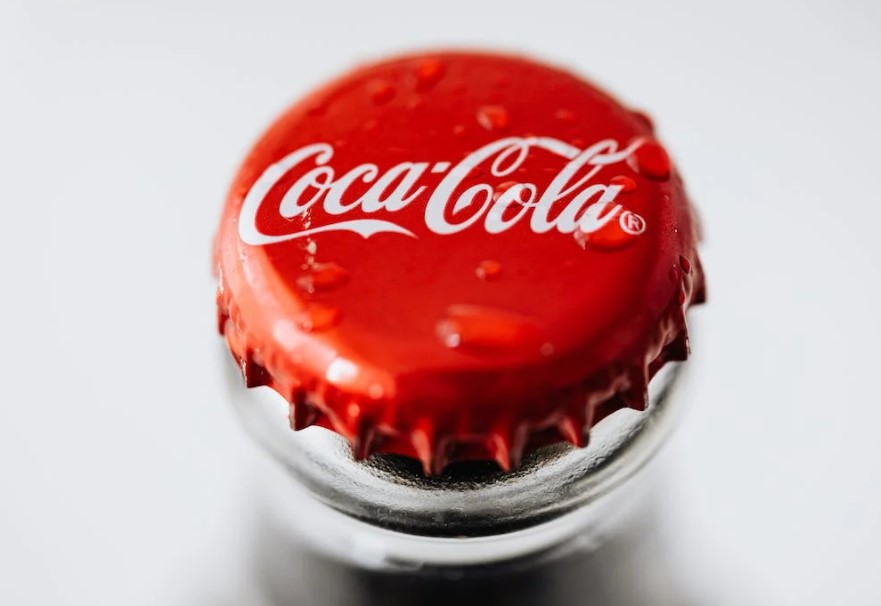So, you’re strolling through the grocery store, minding your own business, maybe going for the usual Coke (because, you know, you have your usual Coke)—and then you look down at the bottle. The cap. It’s yellow. Not the usual red, not black, not some seasonal promotion thing—simply bright yellow, like your soda is suddenly wearing a little sun hat. And if you’ve never seen it before, you might think to yourself, “Huh. Limited edition?” and move on. But it’s not random. Not one bit.
There is a story behind it. One that involves religion, tradition, and surprisingly some sugar science.
First off: Yeah, Coca-Cola Knows What It’s Doing
Coca-Cola the brand has been with us since the late 1800s. You probably already knew that, or at least knew enough to know it was old enough that people still call it Coca-Cola instead of just Coke when they’re being formal. It is basically the model for American soft drinks, and by this point it has absolutely nailed global presence. But the point is, even with all this width and depth, Coke still manages to make these marginal changes—subtle changes that are more about respect than marketing.
Case in point? The yellow cap.
So, Why the Yellow Cap? Two Words: Passover Coke
That yellow cap isn’t just to show off. The Coke inside is formulated specifically for this holiday, Passover. Yes, it is the Jewish holiday. You may not make any connections between soda and religion, but here is where it gets kind of interesting. See, for Passover—a spring holiday that lasts for seven or eight days, depending on where you’re coming from—Jewish law forbids the consumption (and even ownership) of something called “chametz”. Chametz includes leavened foods and anything made from one of five grains—wheat, barley, spelt, oats, or rye—that has come into contact with water and fermented. It is quite a to-do in observant households. But there is a second category: “kitniyot”

Now kitniyot is where this becomes relevant. Kitniyot includes things, like rice, legumes, and yes—corn. And what’s in your standard red-capped coke? High-fructose corn syrup.
Corn syrup = not kosher for Passover
Here’s the rub: Coca-Cola is generally kosher year-round. But for Jews who avoid corn for Passover—specifically Ashkenazi (Eastern European) – just regular coke is NOT KOSHER FOR PASSOVER! So, for 15 days a year—Americans can substitute their usual sweetener for good, old-fashioned cane sugar. No corn. Just sucrose.
And that brings us to the yellow cap. No revolutionary branding or a novel flavor profile—just a subtle acknowledgement of a group of people who happen to need a corn free option to celebrate their holiday. A “Hey, we see you” from a corporation that could just choose to ignore it completely.
Yes, it really still tastes like coke (sorta)
If you are interested in whether the sugar-sweetened version tastes different: slightly, yes. People with a passion for soda will try to convince you that they can detect the difference between high-fructose corn syrup and cane sugar. It’s sort of the same sentiment some people have that Mexican Coke (which also uses cane sugar) is better. Sweeter. Smoother. Less artificial concerns. The truth is, it boils down to your taste buds. Some people purchase the yellow cap of Coke simply for the taste, even if they don’t know what Passover is.
The official stance is that the flavor is largely consistent. The important thing is uniformity. You aren’t supposed to sip it and think “Ahhh yes, this is a religious accommodation.” It’s just Coke. With different sugar patterns.

It’s Not More Expensive (Because That Would Be A Whole Thing)
Coca-Cola interestingly doesn’t charge a premium for the yellow-cap. Honestly, given that it’s a specialty run with a slightly different ingredient, that’s… somewhat cool? They aren’t turning Passover Coke into a limited-edition collector’s version. It’s just there. For the people who need it. Also for the people who are curious.
You typically find Coke with a yellow cap in stores that are situated in strong Jewish demographics—basically, New York or certain parts of L.A. or Miami or Chicago. It shows up on shelves a couple of weeks before Passover and disappears silently afterwards. Blink, and you’ll miss it. Unless you’re looking for it.
The Cap is a Signal, but also a Symbol
While functional, it’s also at least somewhat meaningful. The bright yellow cap means, “Hey, we made a change for you.” It’s not a press release. It’s not an outrageous advertisement. It’s just a little change in plan, hiding in plain view.
For many people, it’s something they anticipate every spring. Like: oh hey, yellow caps are back. That little touch offers an annual moment of acknowledgement and thoughtfulness, and in a time when large brands don’t typically acknowledge niche needs—like, that’s cool.
So the next time you see a yellow cap, now you know
This isn’t random. This isn’t a fad. This isn’t a new Coke flavor they forgot to announce. That lid is important. It means someone, somewhere, made a conscious effort to recognize a community’s tradition, and changed a global product for it.

You don’t have to be Jewish or even celebrate Passover to find that design thoughtful or purposeful. It’s a low-key inclusive moment that doesn’t yell at you from the label. Just a small flash of yellow. Easy to lose. Easy to appreciate.
And there’s also likely someone out there buying a case of yellow-cap Coke just because they’re adamant it tastes better. Honestly? That’s not a horrible reason. Pick one up, drink it cold and enjoy the small pop of meaning hiding in your bottle.





